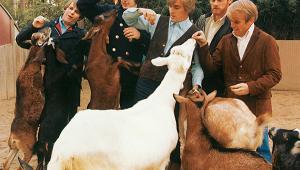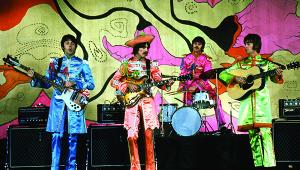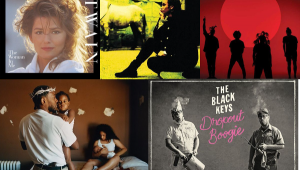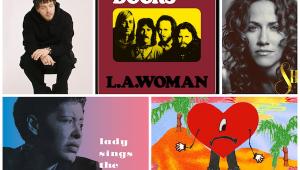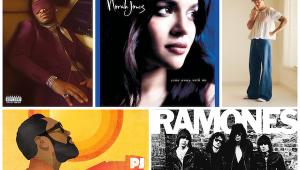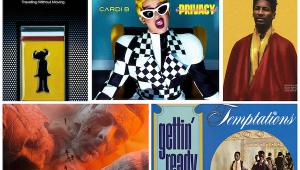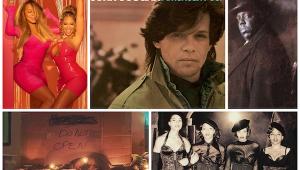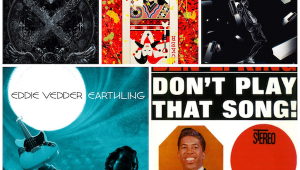What a Wonderful Spatial Audio World
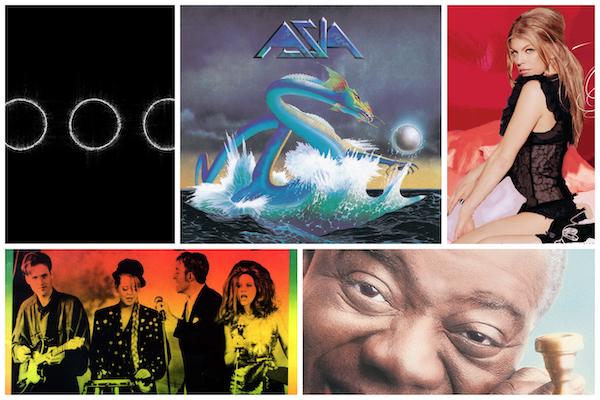
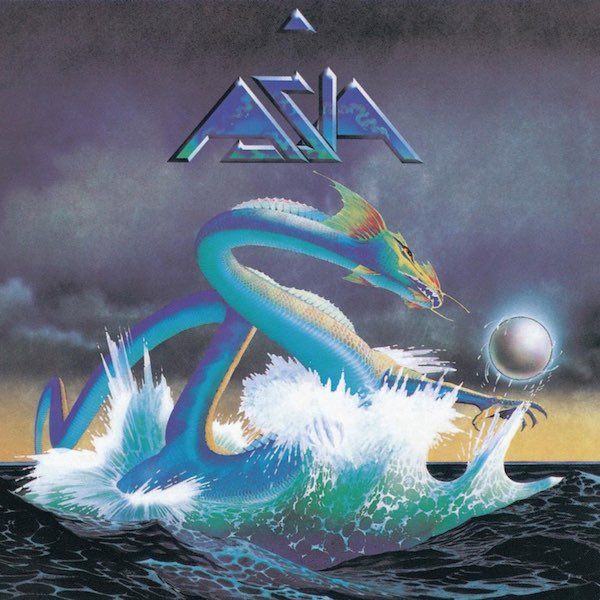
ASIA: “HEAT OF THE MOMENT”
British supergroup Asia consisted of four virtuosic musicians who shared an uncanny knack for distilling their progressive-leaning chops into pop rock for the masses. The evidence is on full display all over their chart-topping self-titled March 1982 debut album, and the Atmos version of its popular lead track “Heat of the Moment” makes it even more appealing across the board.
Guitarist Steve Howe’s massive opening power-chord riffing (courtesy of a Les Paul Junior) spreads wide across the stage, loud and in charge, as vocalist John Wetton’s somewhat apologetic lead vocals enter high in the middle, with drummer Carl Palmer’s buildup cymbal rides residing slightly back in the mix at center right. Wetton’s next verse moves center left and then becomes fully centralized when he extends the vowel in “face,” with Palmer’s definitive snare hit adding pure thunder to support it.
Palmer’s textbook “Be My Baby” drum rolls—an homage to Hal Blaine’s signature on-the-four intro to that massive 1963 hit single from The Ronettes—rule the next few lines, leading straight into the double-vocal chorus. Howe’s full-field guitar runs are mirrored by Geoff Downes’ keyboards and, to a mildly lesser extent, Wetton’s bassline. An added tambourine hit fuels Palmer’s on-the-four moments during the verse right after that first chorus, with his bass drum staying centered for full impact while the tambo hits spread wide with a slight delay.
The instrumental break after Wetton extends the word “eyes” into multiple syllables sends Downes’ keyboard riffs far and wide, with Wetton’s bassy thumps planted down the middle and Palmer’s cymbals again center right. Howe’s supportive slide guitar riffage stays back in the mix and Downes’ Eastern-tinged keyboard stabs roll right, then left before the next verse section commences, this time with Palmer adding a firm cowbell to his centralized percussive menu.
By the time we get to Howe’s gnarly, song-closing guitar solo that fuels Wetton’s final repeats of the title phrase, all four musicians are fully in sync together, in turn demonstrating how to best serve the collective good of the song at hand rather than showing off their own respective individual instrumental prowess.
You can tell by the look in my eyes, or at least in the tone of my words, that “Heat of the Moment” shines bright and true as our favorite Made for Spatial Audio track of the week.
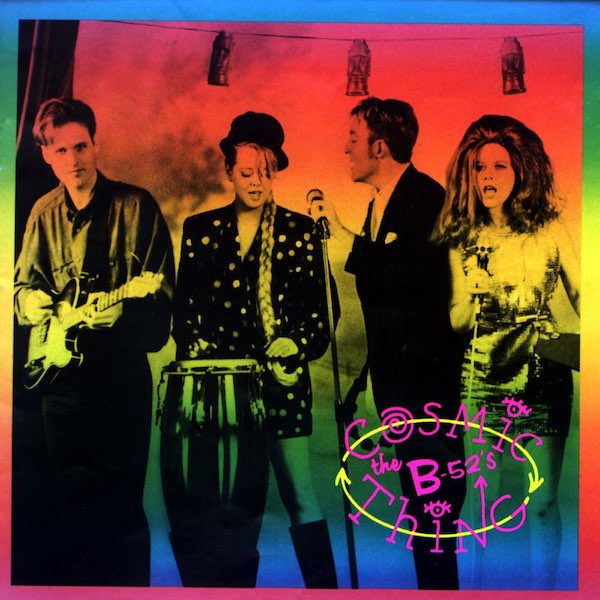
THE B-52’S: “LOVE SHACK”
Athens, Georgia-bred new-wave darlings The B-52’s hit the proverbial jackpot with “Love Shack,” the breakout dance floor hit from their June 1989 comeback album Cosmic Thing. “Love Shack” has since become an inveterate party anthem that continues to defy the generational divide, and it’s even more celebratory in Atmos.
Charlie Drayton’s forceful drumming starts the party off right—or, rather, dead center—with the partygoer exclamations spread wide on both sides with handclaps in tow. Fred Schneider’s reverb-laden vocals set the destination map right down the middle before giving way to Cindy Wilson and Kate Pierson’s lead vocal turn, with Keith Strickland’s jangling guitar riffs taking root center left to support them—though his guitar does commence moving back and forth across the stage as the vocal lines unfold.
Cindy and Kate’s sweet singing blend lifts on high before Fred returns to retake the wheel, the ladies’ harmony lines moving, grooving, and swirling just a bit back in the mix until they again take over the lead vocals. The full-on party buzz continues to spread wide, with Fred taking on a recurring, lower vocal tone behind Cindy and Kate. Their infectiously fun “woo!” response when Fred leads the next verse is sheer heaven. Oh, and be sure to zero-in on Kate’s enunciation of the last “highway” before the next chorus kicks into gear. (That’s where it’s at. . .)
After Fred repeats the line “funky little shack,” Strickland takes the funk part to heart with his center right to center left stage-traveling lead guitar riffage. And if you know this track as well as I do, then you know what’s coming not long after the next all-in chorus—the signature moment soon following the breakdown section driven by horns, percussion, handclaps, a solid bassline, and the “bang bang bang on the door, baby” call-and-response sequence. I am, of course, talking about the moment when the music drops out and Fred exclaims, over an extended cymbal ride, “You’re whaaat?” and Cindy replies, up in the rafters with her vowels fully extended: “Tin roof, rusted!” A quick unforced laugh immediately follows off to the right, and the party rolls onward and outward with the final horn bleats, whoops, and all-channel hollers of approval.
Just in case you’re wondering, Cindy did indeed once confirm to me directly that her brilliant “tin roof” flash was essentially improvised in the moment, her one-off description of the conditions of the actual five-room cabin her bandmate Kate lived in during the band’s “Rock Lobster” era of the previous decade that ultimately inspired some elements of the song itself. At any rate, next time you have a chance to head down the Atlanta Highway and/or are looking for the love getaway, you could hardly go wrong by cuing up “Love Shack” in its Spatial Audio form to assist in powering your quest.
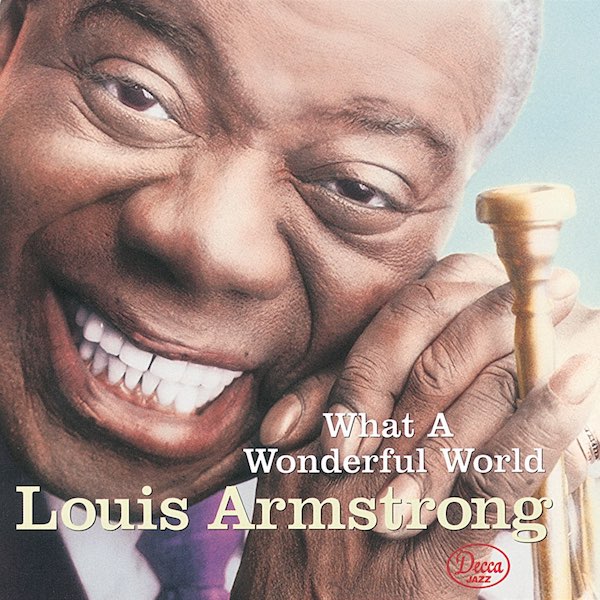
LOUIS ARMSTRONG: “WHAT A WONDERFUL WORLD”
Enduring trumpeter and jazz-vocal legend Louis Armstrong instantly made Bob Thiel and George David Weiss’ “What a Wonderful World” an international sensation in 1967. The song’s enveloping orchestral arrangement, coupled with Armstrong’s forever-warm embrace of a lead vocal, take on additional gravitas in Atmos. In fact, in honor of one of Armstrong’s best-loved nicknames, we will have to rename the format Satchmos just for the purposes of this particular track evaluation alone.
The orchestral strings arranged by Artie Butler (as recorded at famed engineer Bill Porter’s United Recording studio in Las Vegas, with Armstrong duly in tow) open up “World” wide across the stage before settling in mostly to the left. Satchmo’s signature gravelly vocal tone grabs your heart as soon as he enters up in the clouds with the opening lines, “I see trees of green / Red roses too,” supported by a sympathetic acoustic guitar line just behind him in the middle and a percussive scratch over in the right. The orchestra swells both on high and in its volume level upon Armstrong’s singing of the title phrase for the first time. The strings then return to their previous, wider berth in the next verse.
Armstrong’s throaty enunciation of “myself” is fully discernable before he repeats the title phrase again, itself nestling on the left and the acoustic guitar figure moving to the right. A flute and a subtle organ line waft in behind him as he sees “people going by,” soon followed by supplemental strings entering the frame to soar further upward in the middle when “babies cry.” Once Armstrong gets to his final reading of the title phrase, his drawn-out enunciation of “world” adds a new vowel-derived syllable near the end of it, with his final “ooh, yeah” flying on into the ether with the strings right up there with him.
Simply put, “What a Wonderful World” is breathtakingly wonderful in Satchmos, er, Atmos.
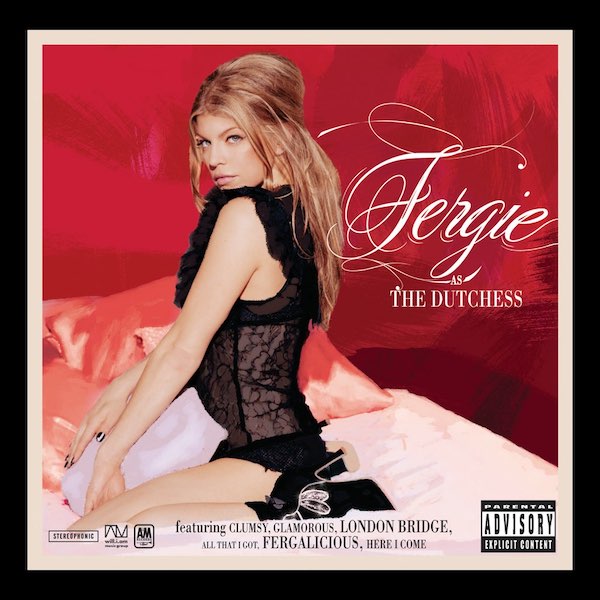
FERGIE: “BIG GIRLS DON’T CRY (PERSONAL)”
Former Black Eyed Peas vocalist Fergie made a major splash with her September 2006 solo debut The Dutchess. Produced by her erstwhile Peas bandmate will.i.am, the album’s fourth single and third No. 1, “Big Girls Don’t Cry (Personal),” vaulted to the pole position across the globe—a fitting perch for such a touching ballad made even more heartfelt in Atmos.
A resonant cymbal ride opens the track followed by acoustic guitar up the middle and a programmed synth burble before Fergie enters with her breathy repeats of “Da da da da” in full. The cymbals resonate wide after her final repeat of those four syllables before shifting to the first actual line, “The smell of your skin lingers on me now,” which is way out front in the overall, fully enveloping mix. Incidentally, the intimate nature of Fergie’s line readings here should encircle you like a warm vocal coat.
As she shifts into the next verse, slight reverb delays roll center left and right, those delicate cymbal taps and acoustic guitar following along in the center, as well as that recurrent synthy swizzle now burrowing in behind her (a classic will.i.am production touch if ever there was).
As the chorus unfolds, Fergie’s doubled-tracked vocalized emotionality climbs on high, with the more forceful bass and drums equally rising in their volume level. Once Fergie gets to the title phrase, the instrumentation falls back, replaced by a percussive element reminiscent of something similar in Blondie’s “Heart of Glass.”
Fergie’s self-confidence takes charge in the next verse, leading up to the first multilayered string section entry, its presence made known even more up on high as she increases the tempo of her singing. Surface noise buttresses the centralized drumkit in the next verse section, and the strings return to move across the stage when she admits, “but it’s time for me to go,” in turn uplifting the final, earned payoff lines. After Fergie sings the final title phrase, the acoustic guitar takes center stage before the bowed cellos and violas carry everything to the fade.
“Big Girls” sure knows how to make its most sincere and personal presence known via its enrapturing Spatial Audio form, and its earnest sentiments just might stick with you long after the track ends.

SWEDISH HOUSE MAFIA & THE WEEKND: “MOTH TO A FLAME”
House music superstars Swedish House Mafia enlisted visionary Canadian vocalist The Weeknd to front their global October 2021 hit “Moth to a Flame,” the third single from their just-released, long-gestating debut album Paradise Again—and it’s a full-on ambient-house masterstroke in Atmos.
Piano lines and synth open the track wide, with The Weeknd’s initial ethereal, wordless, emotive vocal lines reverberating slightly back in the mix before he moves right out front in the clouds to sing the title phrase. His next line pans far to the left before being re-centered, with his fully extended emphasis on the second half of the word “away.” The in-motion SHM backing track continues to pick up the pace around him, with an insistent low-end presence in the middle as the layered keys spread wider and wider. When The Weekend’s lead vocal again veers off to the left, a sampled beat drives into the lane behind him, starting in the middle before also taking on a left-leaning perch.
The echo on certain Weeknd words at this point in the track is envelopingly engaging, this sequence ultimately getting me to wonder what a Weeknd/George Michael duet backed by SHM might have sounded like. At any rate, as he sings more and more insistently, the volume lifts and the track goes even wider, taking full measure of the space at hand. When the beat drops out and it’s just The Weeknd and the synth, the floor rises higher and higher until the beat returns to bring it on home, with synth and Weeknd working overtime in the left—though you should also be able to catch a stray “hey!” or two off to the right. The synth then carries the final track load to its relatively abrupt finish line.
Ain’t no doubt about it—“Moth to a Flame” will draw you into its fiery synth-pop aural web in full in Spatial Audio.
Related:
HOW TO GET THE MOST OUT OF SPATIAL AUDIO
For more about the specs, gear, and setup options you’ll need to experience the very best of the ever-expanding Apple Music universe of fully immersive Made for Spatial Audio Dolby Atmos mixes, go here.
FURTHER LISTENING
Still want more Made for Spatial Audio options to listen to before an all-new Spatial Audio File returns next Friday? Go to Apple Music: Spatial Audio Relations to get an additional all-channel fill.
